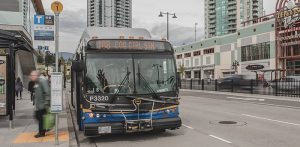
Photo credit: translink.ca/
SURREY – The City of Surrey is urgently calling for a transit plan for the city’s projected growth to one million residents within the next 20 years
The population has increased from 400,000 to more than 650,000 since the last Transit Plant was developed by Translink in 2007. The City of Surrey is urgently calling for a transit plan for the city’s projected growth to one million residents within the next 20 years.
Today, only 27% of Surrey residents have access to frequent transit, compared to 90% in Vancouver. This underscores the urgent need for expansion and equity in transit for Surrey’s growing population, and prioritizing transit service expansion in Surrey ahead of other regional municipalities.
Transit ridership in Surrey has led the way in the region with post-pandemic ridership recovery at 115%, while other municipalities have not achieved pre-pandemic ridership levels. Furthermore, 13 of the region’s top 20 overcrowded bus routes are in Surrey.
“With our rapid growth, we cannot continue to rely on a transit system that fails to meet our residents’ needs,” said Mayor Brenda Locke. “Surrey is long overdue for a robust transit network that connects neighbourhoods within our city. Compared to our neighbours north of the Fraser River, we have been underserved and this shortcoming must be made up. It is far too often that we see buses in Surrey pass by crowded bus stops because they are already at capacity. With the province’s imposition of housing quotas, it is essential that Surrey has there is a transit plan that not only addresses current demands but also prepares for the future.”
Surrey’s communities are set to become substantial urban centers. By 2050, the City Centre and Newton areas alone are each projected to exceed populations of 200,000—surpassing the projected populations of the majority of cities in Metro Vancouver. It is crucial that transit service is expanded in Surrey, where ridership growth is highest in the region.
Surrey has called for immediate transit service expansion and a long-term vision that includes:
- Extending Rapid Transit along King George Boulevard from City Centre to South Surrey. This corridor should be top priority in the region as the existing R1 Rapid Bus has the highest ridership per service hour of all rapid buses and is the 7th busiest bus route in Metro Vancouver.
- Improving transit connections between communities in Surrey. Critical employment hubs have little to no access to transit from key areas in Surrey and neighbouring municipalities. For example, it can take 1.5 hours to take transit from Newton to Campbell Heights.
- Improving east-west transit connections in Surrey. It is currently very challenging to travel east/west in Surrey on transit.
Business Examiner Staff


